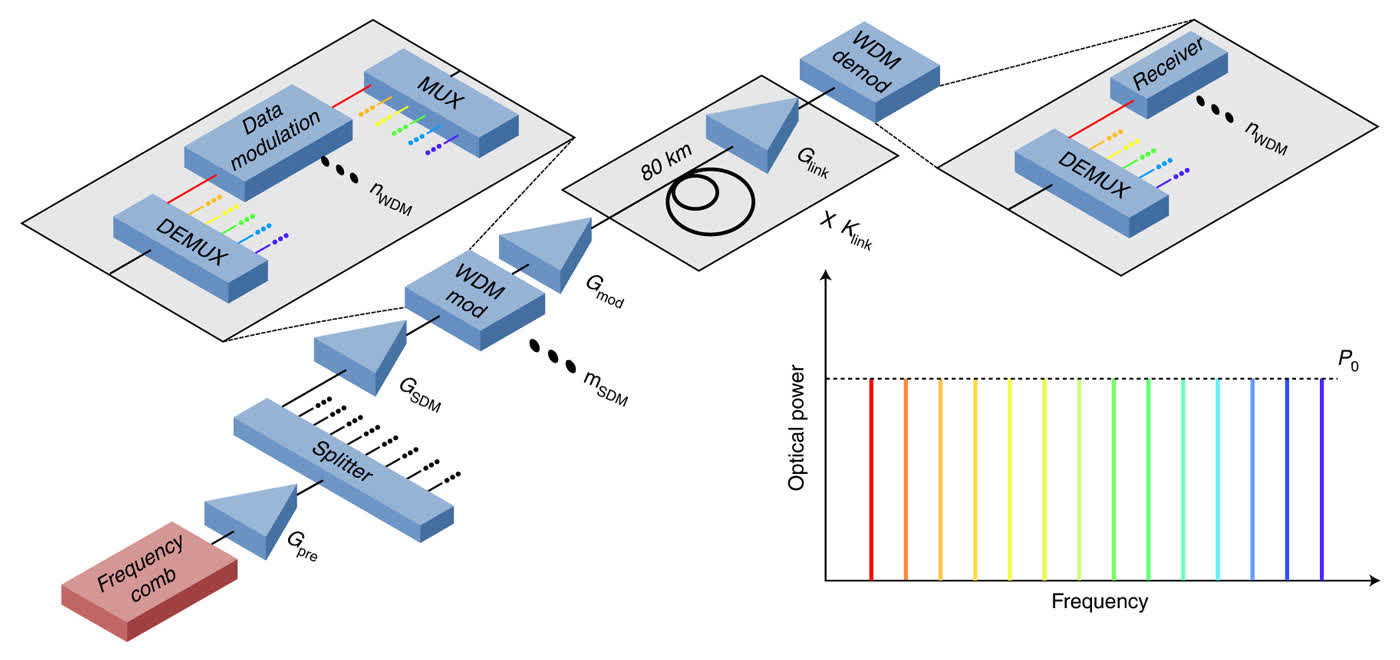Forward-looking: Scientists from Copenhagen were able to transfer twice the size of everyday's Internet traffic through a single fiber optic cable, an unprecedented feat that could bring silicon photonics one step closer to reality with massive improvements for everyone.
Scientists at the Technical University of Denmark (DTU) have scored a new record in silicon photonics research, achieving a never-before-seen data transfer of 1.84 petabits per second. Even better, the researchers used a single "computer chip" as light source and a single fiber-optic cable as a transmission channel.
The research, authored by Asbjørn Arvad Jørgensen and his colleagues, is aptly named "Petabit-per-second data transmission using a chip-scale microcomb ring resonator source." The scientists used a single photonic chip (or "chip-scale light source") connected to a 37-core fiber optic cable, demonstrating the aforementioned 1.84 petabit/s data transmission over a distance of 7.9 kilometers.
The European researchers were able to achieve this record transfer - which is equal to roughly twice the amount of data for Internet worldwide traffic in a single day - by splitting the data stream into 37 sections, one for each core of the fiber-optic cable; afterward, each one of these channels was split into 223 data chunks represented by different frequencies in the electromagnetic spectrum through a "frequency comb."
This way, the data was transmitted in different frequencies at the same time without interference. The final result, as Jørgensen explains, was the ability to send an amount of data so large that no computer technology existing today can supply or receive. Instead, the scientist passed "dummy data" through all the channels and then they tested the output one channel per time to confirm the data was actually sent and it could be recovered in its original form.
According to Jørgensen, the entire system designed for their experiment needs a single laser firing continuously, a frequency splitter and separate devices to encode data into the output streams; all of this could be integrated into a single chip, the researcher assured, bringing the promises of silicon photonics one step closer to reality.
As explained in the Nature-published research, "optical fiber communication is the backbone of the internet," but essential core technologies are approaching their limits in size, speed, and energy efficiency. New technology breakthroughs capable of offering further scaling in data transmission capacity are needed, and the work from the Copenhagen-based scientists shows that "a single optical frequency-comb source based on a silicon nitride ring resonator" can theoretically bring Internet technology into the petabit-per-second realm - and into the future.

